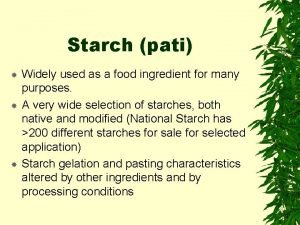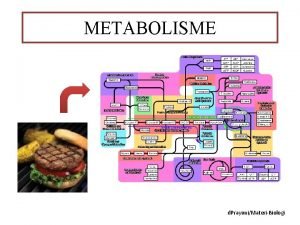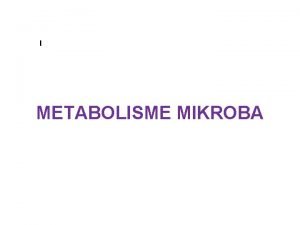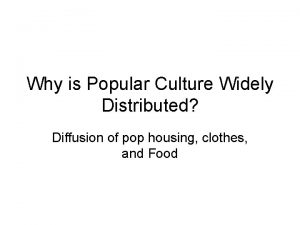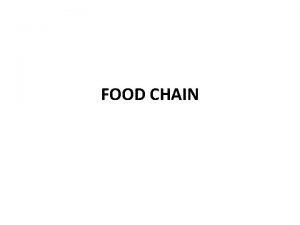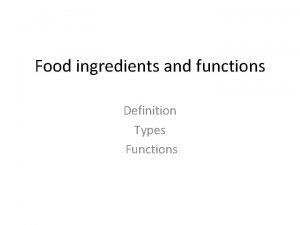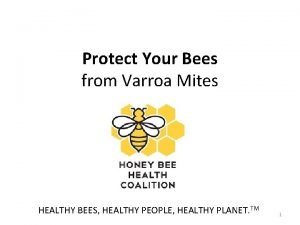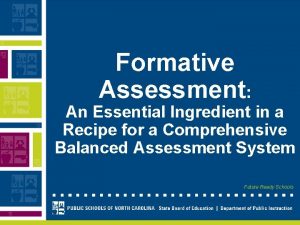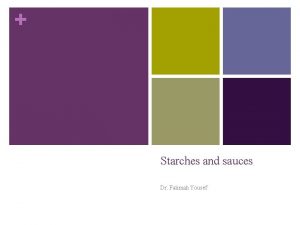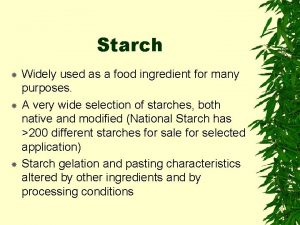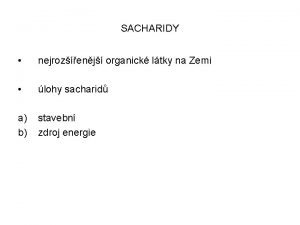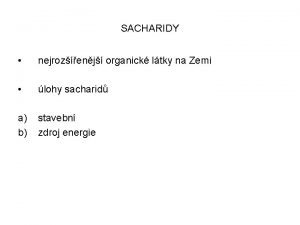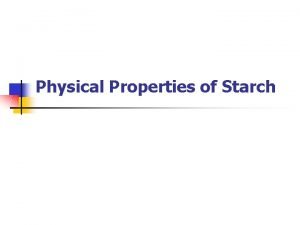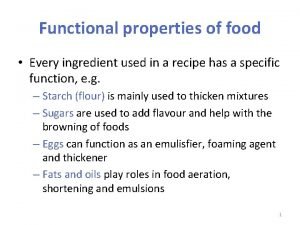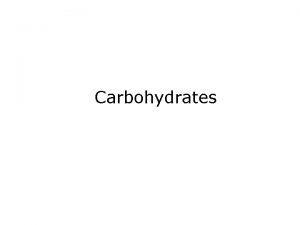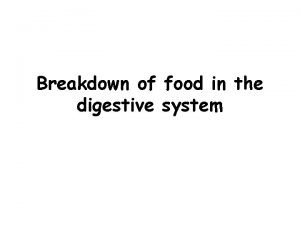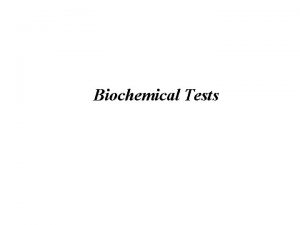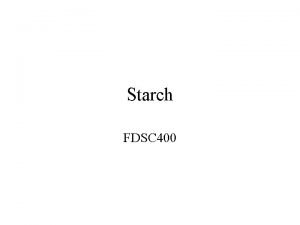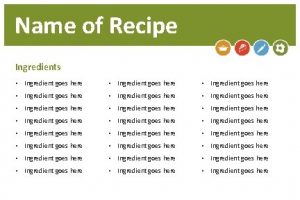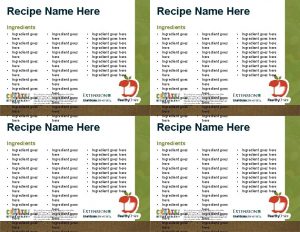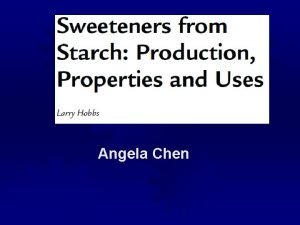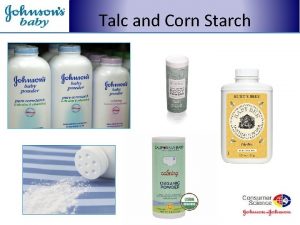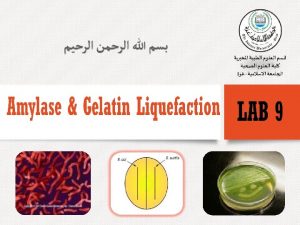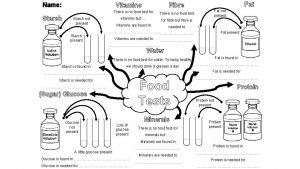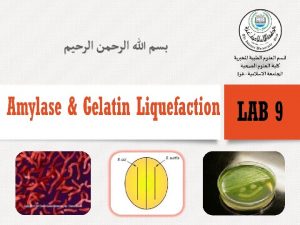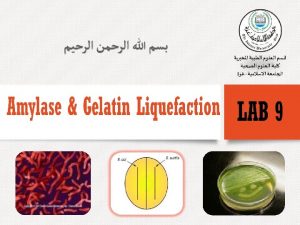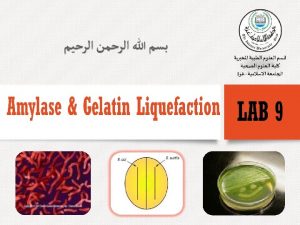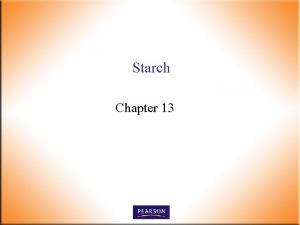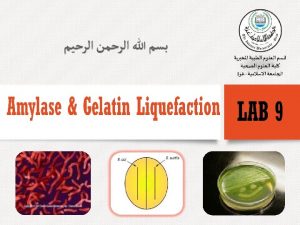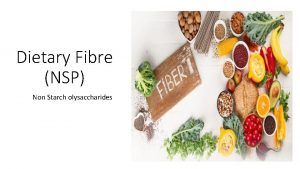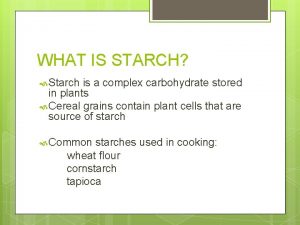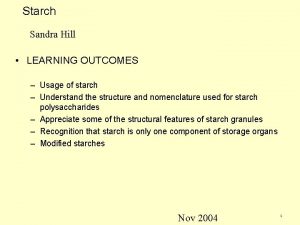Starch pati Widely used as a food ingredient


















































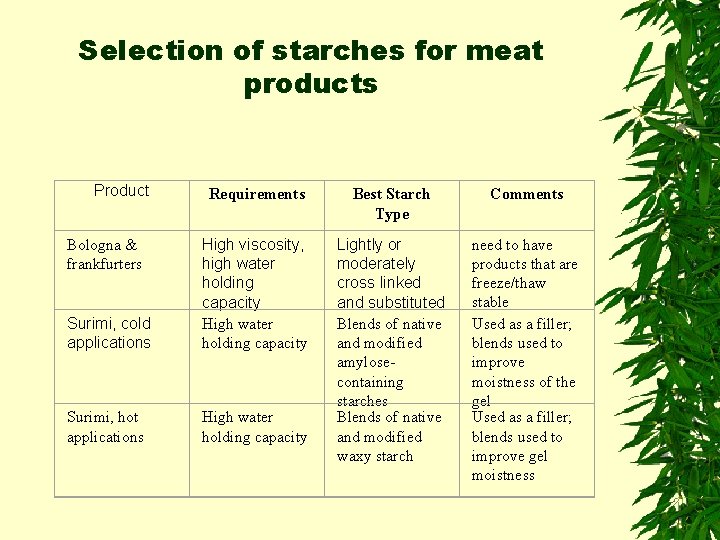
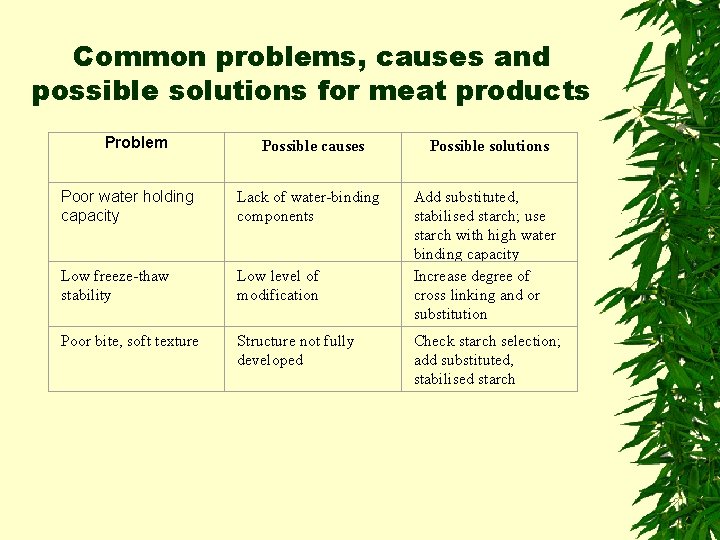
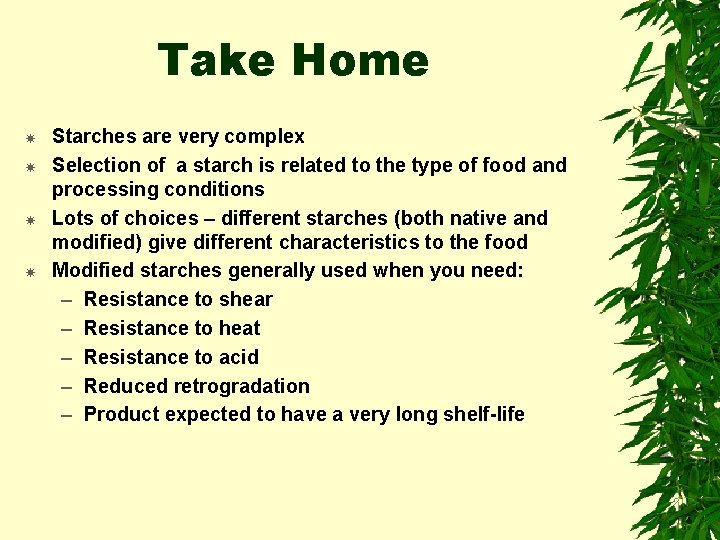
- Slides: 53

Starch (pati) Widely used as a food ingredient for many purposes. A very wide selection of starches, both native and modified (National Starch has >200 different starches for sale for selected application) Starch gelation and pasting characteristics altered by other ingredients and by processing conditions

Unheated starch granule Heated starch granule

Starch Forms Starch is the primary carbohydrate source for growing seeds and leaf tissue development and is found in leaves, tubers, fruits and seeds. Two general types of starch exist – amylose and amylopectin. Both are polymers of glucopyranose molecules, but differ in structure and functional properties,

Characteristics of Amylose and Amylopectin Characteristic Amylose Amylospectin Form Essentially linear Branched Linkage -1, 4 (some 1, 6) -1, 4; -1, 6 Polymer units 200 -2, 000 Up to 2, 000 Molecular weight Generally <0. 5 million 50 -500 million Gel formation Firm Non-gelling to soft

Amylose

Amylopectin

Amylopectin General Structure

Amylopectin structure (Chaplin, 2004)


Crystal Structure Forms The form depends upon the source of the granules. Type A crystal structure is found in most cereals, whereas Type B is found in some tubers and high amylose cereal starches. Some plants have both A and B and are desginated Type C. When starches are heated in the presence of lipid, a different crystal structure may be formed, which is called Type V.

Types of crystal structure in amylopectin (Chaplin, 2004).

Native Starches The most common native starches are corn (maize), rice, wheat, potato, tapioca (cassava) and waxy maize. Except for waxy maize, these starches generally contain from 15 -27% amylose. Waxy maize and other waxy native starches generally contain less than 2% amylose. High amylose starches contain more than 30% amylose and have quite different properties. They: Are difficult to gelatinise > 100° C Can form films and fibres Have more helical structure - may entrap fatty acids – retards granule swelling

Differences in Native Starches Vary in amylose and amylopectin content Vary in crystal structure Vary in gelation and pasting characteristics Vary in minor components that can be incorporated within the structure of amlyose and amylopectin – Phoshate esters – Phospholipids – Proteins

Starch Viscosity, mild heat, neutral Viscosity, high heat, acidic Shear resistanc e Freeze -thaw stabilit y Comments Tapioca (N) 3 3 5 3 Bland flavoured, fillings and canned Tapioca (N) 3 3 5 2 Process tolerant, short texture; dairy products, soups and sauces Tapioca (CL) 4 4 4 6 High viscosity, dairy products Potato 6 2 2 2 Rapid hydration, high viscosity; meat, sauces snacks Corn 3 4 5 3 Process tolerant, low hot viscosity; dressings and cereals Waxy maize, cross linked 4 5 4 6 Freeze thaw stability; frozen foods, fillings and sauces

Types of Food Starches Unmodified Native starches: Corn, wheat, etc. Pregelatinized starches Modified Acid thinned - hydrolyze to reduce molecular weight Crosslinked - Chemically linking OH's from two adjacent molecules. Toughens granule. Adds acid and heat stability Derivatized - Add bulky groups to starch to reduce retrogradation. Changes hydrophobicity Crosslinked-Derivatized - Does both Oxidized - reduces retrogradation.

Modified Starches

Cross-linked starches make up about 25% of all starches used in foods. The four major cross-linking agents are shown in Table 7. In addition to different crosslinking agents, the degree of cross-linking varies. The details of the cross-linking of commercial starches remain proprietary to the company making the starch. Table 7: Cross-Linking Agents for Starch Reagent Epichlorhydrin Starch - O-CH 2 -CHOH-CH 2 -OStarch Sodium Trimetaphosphate Starch - O-P-O-Starch Phosphorus Oxychloride Starch - O-P-O-Starch Acrolein Derivative Starch-O-CH 2 -C-O-Starch

Cross-linked starches make up about 25% of all starches used in foods. The four major crosslinking agents are shown below. In addition to different cross-linking agents, the degree of cross -linking varies. The details of the cross-linking of commercial starches remain proprietary to the company making the starch. Reagent Epichlorohydrin Starch Sodium Trimetaphosphate Phosphorus Oxychloride Acrolein Derivative Starch - O-CH 2 -CHOH-CH 2 -OStarch - O-P-O-Starch-O-CH 2 -C-O-Starch

Derivitized Starches The five primary derivatized starches, the derivatising agents and the degree of substitution are shown in the following table. The starch properties will vary with the type of derivatised starch and the degree of substitution. Many companies made “double derivatized” starches that are both cross-linked and derivatized.

Derivatizing Reagents Reagent Acetic anhydride 0. 10 Vinyl acetate 0. 10 Propylene Oxide 0. 20 Sodium tripolyphosphate 0. 02 Succinic anhydride 0. 05 Derivative D. S. Starch acetate 0. 05 - Hydroxylpropyl starch 0. 05 - Starch phosphate 0. 01 - Succinylated starch 0. 02 -

Gelatinization and Pasting “Starch gelatinisation is the collapse (disruption of molecular order) within the starch granule, manifested in irreversible changes in properties such as granular swelling, native crystalline melting, loss of birefringence and starch solubilisation. The point of initial gelation and the range over which it occurs is governed by the starch type, concentration, method of observation, granular type and heterogeneities within the granule population under observation. ” “Pasting is the phenomenon following gelatinisation in the dissociation of starch. It involves granular swelling, exudation of molecular components from the granule; and eventually the total disruption of the granules”

Factors Affecting Hydration Amount of water Availability of water Time and Temperature of heating Starch type Corn vs. rice etc. Crosslinking Derivitization Pregelatinization p. H Saturated monoglycerides

Problems Failure to hydrate Retrogradation Amylases Loss of viscosity

Starch Gelation and Pasting

Pasting Cycle

Pasting characteristics of different native starches (from Food Additives, 2 nd Ed 2002, Brane et al. Eds)

Gelatinization of starches Type % Amylopectin % Amylose Gelatinization Range °C Granule Size m Corn 73 27 62 -72 5 -25 Waxy Corn 99 1 63 -72 5 -25 High Amylose 20 -45 55 -80 67 -100+ 5 -25 Potato 78 22 58 -67 5 -100 Rice 83 17 62 -78 2 -5 Tapioca 82 18 51 -65 5 -35 Wheat 76 24 58 -64 11 -41

Paste Properties of Native Starches Starch Type Cereal Regular Waxy Root, tuber High Amylose Viscosity Short Long V Short Clarity Opaque Clear-opaque V Opaque Gel Shear Stability Strong Good V Weak Poor Weak Poor V Strong Stable

Summary of cornstarch paste properties Type Comments Native Poor freeze thaw stability High amylose Granules- birefringent Acid modified Decreased hot paste viscosity Hydroxy-ethyl Increased paste viscosity - low retrogradation Phosphate Reduced gel at refrigeration temperature - low retrogradation Cross-linked Reduced peak viscosity, increased stability; freeze thaw stability Acetylated Good paste clarity and stability

Exogenous and Endogenous Effects on Starch Pasting Characteristics Acid p. H Sugar Lipids Proteins Shear

Effect of Acid on Starch Pasting

Effect of p. H on Pasting of Corn Starch

Effect of Sugars on Pasting of Corn Starch

Processing Effects • Processes that are known to affect the pasting characteristics of starches include: · Order of addition of ingredients · Temperature achieved · Rate of temperature rise · Duration of heating · Rate of cooling · Storage temperature · Shear

Retrogradation Solubilised starch polymer and remaining insoluble granular fragment tend to re-associate after heating. The re-associating is termed “Retrogradation”. Retrogradation has been defined as follows: “Retrogradation is a process which occurs when starch chains start to re-associate into an ordered structure. In its initial phase, two or more starch chains may form a simple junction point, which then may develop into more extensively ordered regions. Ultimately, under favourable conditions, a crystalline order appears. ” Generally, amylose-containing starches show greater retrogradation. Factors relating to retrogradation include:

Factors relating to retrogradation include: · Amount of branching · High amylopectin starches - e. g. , waxy maize shows no retrogradation when frozen · Hydrogen bonding between OH groups in amylose in gelatinised starches during cooling · Water forced out of gel structure (syneresis) & Starch insolubilized.

Amylopectin also plays a role in retrogradation over time. Short-term retrogradation is largely associated with amylose (which reaches a limit in 2 days), whereas long-term retrogradation is thought to involved amylopectin (reaching a limit is 40 days) The botanical source is important in respect to retrogradation, not only for starches that differ in amylose content, but also for starches with very similar amylose content. For retrogradation to occur there must first be an aggregation of the chains. Amylopectin from potato and tapioca (B type starches) retrograde to different degrees and this has been related to difference in short branch chains.

Functions of starch in food systems and examples of how these are utilised in different food systems. Function Example Thickener Puddings, sauces, pie fillings Binder Formed meats; breaded items; pasta Gelling agents Confections Encapsulation, Emulsion Stabilizer Coating Flavours, bottlers emulsions Water Binder Candies, glazes, icings and toppings Cakes Free Lowing/Bulking Agent Releasing Agent Baking powder Texture modifier Processed cheese, meat products Fat Replacer Salad dressings, dairy products, baked goods Candy making

Applications The amount of starch used in different types of foods ranges from 0. 2% in beverage products to 12% is some candies. Use levels, except for gums & candies, generally fall into two general categories. <1%: beverages, butter sauces, cake mix and icing and marshmallows 2 – 5%: baby foods, spoonable salad dressings, Harvard style beets and creamed soups, cheese analogs

Approximate Amount of Starch in Food Products (%) Baby foods 3 -5 Beverages (bottler's emulsions) Butter sauces 0. 3 -0. 5 Cake mix and icings 0. 3 -0. 5 Dressings – Pourable 1. 5 -2. 3 – Spoonable 2. 8 -5. 0 Gum candy 5 -12 Harvard style beets 2 -4 Marshmallows 0. 5 -1. 0 Pie crust 0. 5 -1. 2 Pie filling 3 -5 Pudding – Canned 4. 5 -6. 5 – Cooked 5 -8 – Instant 3 -7 Sauces Thick 4 -6 Gravy 1. 0 -2. 5 0. 2 -0. 3

Lots of Choices

In the selection of a starch for a food application, consideration needs to be given to: Flavour · Texture · Body · Appearance ·

In the selection of a starch for a food application, consideration needs to be given to: Formulation How long is the shelf life of the food High Acid or Low Acid Processing conditions – High heat vs low heat – High shear vs low shear – Both high heat and high shear

Other Questions to ask in Selecting a Starch Is there sufficient moisture to hydrate the starch? · Is the solids level to low or too high? · How will lipids affect the starch and the resulting food? · What salts and what salt levels are required in the food? · What type and level of sugar is being used? · Are there other hydrocolloids included in the formulation?

Source, type, application, function and benefits of some starches in selected foods. Origin Type Applicat ion Function Benefit Corn Native Soup mixes Thickener Body, mouth feel Corn Pre-gelled Puffed snacks Texture Improved processing Waxy maize Cross linked Salad dressing Stabiliser Body, gloss, stability Tapioca Cold water swelling Instant dairy products Texture Potato Native, cook up Dry mixes Thickener Bland flavour, premium cook up texture Rapid hydration, high viscosity

Starch types for different foods and applications Application Binding Viscosity building Film formation Texturising Soups and sauces - X, XS, PX, PXS -- X, XS, PX, PXS Bakery PN X, P, PXS D, M P, X, PXS, M Dairy N, A, M, X, XS, P, PX, PXS -- X, XS, PXS, A, NX, O, PO, M Snacks N, P, PN, PO, D --- -- Batters & coatings X, PX, O P, PX D O, PO, D. M Meat products N, X, XS, P ---- XS XS N=native; X = cross-linked; P=pregelatinised; S=substituted (derivatised); O=oxidised; A=acid hydrolysed; D=dextrin; M=maltodextrin. Where letters are together without a comma, all types are combined into a single product.

Selection of starches for dairy foods Product Requirements Best Starch Type Comments General Dairy Heat tolerant, shear tolerant, freeze-thaw stable, bland flavour Cross-linked and substituted Tapioca best from a flavour viewpoint UHT products More heat & shear tolerant Increase degree of cross-linking Frozen desserts Freeze-thaw stability most important Substituted Dry mix applications Perform under low heating conditions Yoghurt Acid stable Pregelled, low level of crosslinking, freeze- thaw stability Cross-linked Fat replacers in low fat products, crosslinked for better freeze thaw stability Instant puddings and cheese sauces most common usage Used to minimise syneresis Processed cheese Gelling characteristics Cross-linked waxy maize

Common problems, causes and possible solutions for dairy foods Problem Possible causes Possible solutions Syneresis Poor freeze thaw stability; colloid system breakdown Decrease shear; Increase starch level, Increase cooking time and/or temperature; Use stabilised starch Runny texture Low solids content Increase starch; select different starch; decrease shear; check for amylases in other ingredients Graininess Starch not cooked Consider pregelled starch. Adjust water; adjust processing time and/or temperature

Selection of starches for extruded products Product Requirements Best Starch Type Comments Cereals “Bowl” stability High amylose starch Expanded snacks Good expansion Light to moderate cross- linked starch “Half” product Shear stability Twin screw extruded products Shear, pressure and temp. stability Pregelled, cold water swelling, moderate cross linked Cross linked “cook-up” starches Single screw extrusion followed by baking

Common problems, causes and possible solutions for extruded products Problem Possible causes Possible solutions Lack of crispness Weak expansion Increase amylose if product exposed to high shear Poor cutting or shape Low dough viscosity or strength Increase amylosefor high shear; Increase amylopectin for low shear adjust moisture content Non-uniform sheet thickness High water absorption Decrease water content; choose starch with low water holding capacity

Selection of starches for meat products Product Requirements Best Starch Type Comments Surimi, cold applications High viscosity, high water holding capacity High water holding capacity Surimi, hot applications High water holding capacity Lightly or moderately cross linked and substituted Blends of native and modified amylose- containing starches Blends of native and modified waxy starch need to have products that are freeze/thaw stable Used as a filler; blends used to improve moistness of the gel Used as a filler; blends used to improve gel moistness Bologna & frankfurters

Common problems, causes and possible solutions for meat products Problem Possible causes Possible solutions Poor water holding capacity Lack of water-binding components Low freeze-thaw stability Low level of modification Add substituted, stabilised starch; use starch with high water binding capacity Increase degree of cross linking and or substitution Poor bite, soft texture Structure not fully developed Check starch selection; add substituted, stabilised starch

Take Home Starches are very complex Selection of a starch is related to the type of food and processing conditions Lots of choices – different starches (both native and modified) give different characteristics to the food Modified starches generally used when you need: – Resistance to shear – Resistance to heat – Resistance to acid – Reduced retrogradation – Product expected to have a very long shelf-life
 Types of starch
Types of starch Biomedical therapies are provided by
Biomedical therapies are provided by Self secured joint
Self secured joint The most widely used agile process, originally proposed by
The most widely used agile process, originally proposed by Rhipe architecture
Rhipe architecture Distillation theory
Distillation theory Initial permutation in des calculator
Initial permutation in des calculator Dasar cheeseman
Dasar cheeseman Dr nalini pati
Dr nalini pati Plak boyayıcı ajanlar
Plak boyayıcı ajanlar Konsep respirasi aerob
Konsep respirasi aerob Ljiljan bagarić
Ljiljan bagarić Pati
Pati Peta konsep metabolisme karbohidrat
Peta konsep metabolisme karbohidrat What did meena do when paati saw her with a glass of milk?
What did meena do when paati saw her with a glass of milk? építésügyi vizsga
építésügyi vizsga Starch food test method
Starch food test method Most widely practiced religion
Most widely practiced religion Most widely practiced religion
Most widely practiced religion Rapid diffusion of popular culture
Rapid diffusion of popular culture Religion of africa
Religion of africa Unit 2 food food food
Unit 2 food food food Food chain sequence
Food chain sequence Define liquid measuring cup
Define liquid measuring cup What is brand leveraging
What is brand leveraging Individual characteristics of glass
Individual characteristics of glass Carrots turnips onions and celery cut into uniform slices
Carrots turnips onions and celery cut into uniform slices What is a hydroxide relaxer
What is a hydroxide relaxer Ingredient definition
Ingredient definition Cleangredient certified ingredient
Cleangredient certified ingredient Honey bee health coalition varroa
Honey bee health coalition varroa Classical arrangement of vegetable dishes
Classical arrangement of vegetable dishes Quiz 1: the changing language
Quiz 1: the changing language Active pharmaceutical intermediates
Active pharmaceutical intermediates Pancake chemical formula
Pancake chemical formula Which is an example of an essential ingredient in a recipe?
Which is an example of an essential ingredient in a recipe? Stored sauces and starches in a
Stored sauces and starches in a Starch types
Starch types What is starch made of
What is starch made of Cellulose starch and glycogen
Cellulose starch and glycogen Cellulose starch glycogen
Cellulose starch glycogen Maltoza vzorec
Maltoza vzorec Aldotrióza
Aldotrióza Ley de hermann brandt
Ley de hermann brandt 5 properties of starch
5 properties of starch Starch readership service
Starch readership service Starch hydrolysis test results
Starch hydrolysis test results Dextrinisation food examples
Dextrinisation food examples Dextrinization of starch
Dextrinization of starch Starch and liquid combinations
Starch and liquid combinations Is starch a complex carbohydrate
Is starch a complex carbohydrate Starch breaks down into
Starch breaks down into Glycogen vs starch vs cellulose
Glycogen vs starch vs cellulose Starch hydrolysis
Starch hydrolysis
